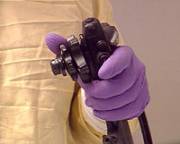 Commentary By Michael Poles, M.D. Gastroenterologist, Assistant Professor of Medicine, Mircrobiology and Pathology.
Commentary By Michael Poles, M.D. Gastroenterologist, Assistant Professor of Medicine, Mircrobiology and Pathology.
Every once in a while I will be feeding this new blorganism (or is it bloganism?) with content from the world of gastroenterology. Today I would like to review an article of importance to both gastroenterologists and internists. There is likely no topic in gastroenterology more important than that of colorectal cancer screening. Colorectal cancer is the second most common cause of cancer death in the U.S., and it takes up an enormous of gastroenterologists’ work effort. The most accepted form of screening for colorectal cancer is by colonoscopy. The most commonly accepted guidelines for colorectal cancer screening and surveillance were proposed by the U.S. Multisociety Task Force (USMSTF) on colorectal cancer, but it is widely held that these guidelines are not correctly followed. The biggest problem regarding CRC screening is that we underscreen; the majority of patients, nationwide, who are eligible, do not undergo appropriate screening. The flipside is likely also true; patients may be over-screened, leading to increased patient-care costs and increased demands on the medical system. With this in mind, I turn to an article in the Annals of Internal Medicine by Dr. Boolchand from University of Arizona (Ann Intern Med. 2006;145:654-659). For this study, the investigators sent out a survey to a random sample of 500 physicians from the American College of Physicians and 500 physicians from the American Academy of Family Physicians. The physicians were asked about when they would reschedule colonoscopy in a fictional 55 year old patient with a variety of findings on an initial colonoscopy.
Now for the fun part, see how you would answer each of the following scenarios. For each question, the patient is a 55-year-old man in good health who underwent a screening colonoscopy. The colonoscopy was completed to the cecum, the quality of the colon cleansing was excellent, and the patient had no family history of colon cancer.
Patient 1) On colonoscopy, they found and removed a 6mm polyp that was a tubular adenoma on histology. Would you repeat the procedure in:
A) 6 months
B) 1 year
C) 3 years
D) 5 years
E) 10 years
F) Repeat is not indicated
Patient 2) On colonoscopy, they found and removed a 6mm polyp that was a hyperplastic polyp on histology. Would you repeat the procedure in:
A) 6 months
B) 1 year
C) 3 years
D) 5 years
E) 10 years
F) Repeat is not indicated
Patient 3) On colonoscopy, they found and removed a 12mm pedunculated polyp that was a tubular adenoma with a focus of high-grade dysplasia away from the biopsy margin on histology. Would you repeat the procedure in:
A) 6 months
B) 1 year
C) 3 years
D) 5 years
E) 10 years
F) Repeat is not indicated
Patient 4) On colonoscopy, they found and removed a 12mm pedunculated polyp that was a tubulvilllous adenoma on histology. Would you repeat the procedure in:
A) 6 months
B) 1 year
C) 3 years
D) 5 years
E) 10 years
F) Repeat is not indicated
Patient 5) On colonoscopy, they found and removed two 6mm polyps that were both tubular adenomas on histology. Would you repeat the procedure in:
A) 6 months
B) 1 year
C) 3 years
D) 5 years
E) 10 years
F) Repeat is not indicated
So, now you can see how you did:
According to the USMSTF guidelines.
Patient 1:should undergo repeat screening after 5 years
Patient 2: The guidelines do not specify when to re-look in patient 2, but since hyperplastic polyps carry a very low to no risk of neoplasia, they should probably be screened after 10 years
Patient 3: The guidelines do not specify when to re-look in patient 3, but the AGA guidelines state that the presence of villous features or high-grade dysplasia necessitates re-look after 3 years
Patient 4: should undergo repeat screening after 3 years
Patient 5: should undergo repeat screening after 5 years
Results
As far as low-risk patients, the results of the study showed that 61% of primary care physicians would survey a single 6-mm hyperplastic polyp in the sigmoid colon in 5 years or less (guidelines suggest a 10-year interval), and 71% would survey a single 6-mm tubular adenoma found in the sigmoid colon in 3 years or less (guidelines suggest a 5-year interval). Similarly, 80% of primary care physicians would survey two 6-mm tubular adenomas in the sigmoid colon in 3 years or less (guidelines suggest a 5-year interval). Furthermore, physicians were more likely to survey 2 adenomas than 1 adenoma at 1 year or less (guidelines suggest that both should be surveyed at a 5-year interval).
As for high-risk 59% of primary care physicians would survey a single 12-mm tubulovillous adenoma in the sigmoid colon in 1 year or less (guidelines suggest a 3-year interval). For follow-up of a single 12-mm pedunculated polyp with a focus of highgrade dysplasia away from the cautery margin, 85% would survey the patient in 1 year or less (guidelines suggest a 3-year interval).
Discussion
As noted, these 1000 physicians survey their patients at intervals shorter than recommended by the USMSTF guidelines. While this practice will result in significant expense to the healthcare system, it also puts patients at unnecessary discomfort and risk.

3 comments on “How Frequently Should You Perform a Follow-Up Colonoscopy-A multiple choice quiz”
what is the significance of a path result of “lymphoid aggregate” and what should the follow-up interval be for this lesion? thanks.
Nothing makes a blogger happier than seeing a question arise from his/her posting, so thanks Vivian.
Lymphoid aggregates are a clinically non-sgnificant finding on biopsy. Just to give you some immunologic background (whether you want it or not), the mucosal immune system is divided into inductive and effector areas. The inductive areas, including lymphoid aggregates and Peyer’s patches represent groups of lymphocytes that are, well, aggregated to form a small nodular structure. We can occasionally see these on endoscopy, especially in the terminal ileum, where they are most prevalent. These stuctures represent areas where antigens are primarily passed from antigen presenting cells (dendritic cells and macorphages primarily) to lymphocytes that become primed to carry out an efector function. Once the cells find cognate antigen in the inductive areas, they migrate to the periphery, proliferate, become activated and express homing receptors that bring them back to the effector compartment of the mucosal immune system (primarily the lamina propria), where they perform their effector function.
So next time you see a lymphoid aggregate, don’t just ignore him, but realize that though he is of no clinical significance, he plays a vital role in the maintenance of colonic health.
I would be interested to see how Gastroenterologists would answer these same questions. I am a Family Practice doc and got them all correct;I find the Gastroenterologists in my region routinely do follow up scopes sooner than guidelines indicate.
Comments are closed.